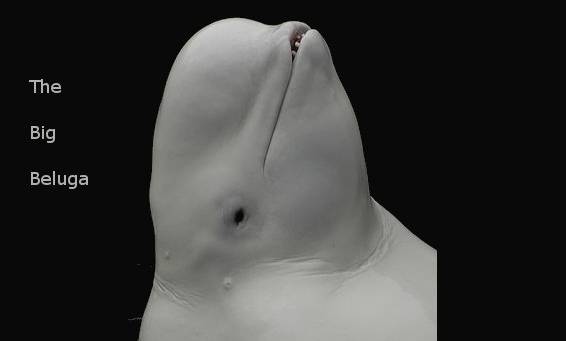Body language derives from basic responses originating in the limbic system. Essentially it is the "fight or flight" response adapted to social situations, except the author adds one more possibility: freeze. Therefore there are three basic responses: freeze, flight or fight.
These three responses are manifested in four general strategies: barriers, adapters, illustrators and regulators. A barrier is any step that we take to increase the amount of social space around us. An adapter is anything that allows a person to gain or regain the social space. An illustrator is an action that we use to punctuate our statements and regulators allow us to control another person's pattern of speech.
These key responses are tempered by five factors that influence how the body language is manifested: self-awareness, sophistication, personal style or grooming, situational awareness and, finally, the sense of another person's entitlement and what is proper.
One has to be aware that some messaging is intentional and some is not. Intentional messaging can be affected by perceived threat. The intensity of the situation can also have an effect.
Sunday, January 9, 2011
Thoughts on the Golden Mean
I was listening to a history book on Brunelleschi and Ghiberti and how their competition was a defining moment in the birth of the renaissance and there was a discussion of how Brunelleschi discovered how to apply linear perspective to modeling. Brunelleschi seemed to be an intense student of how to represent perspectives in art and architecture and he studied the aesthetics of building shapes from the classical period. He was certainly aware of the Golden Ratio. I was intrigued by the idea that a man so obsessed with how humans perceived would be drawn to this ratio, because he was not just one to employ the pragmatics of perspective, he also seemed to understand that there were innate human cognitive processes involved in perception and aesthetics.
It dawned on me at that point that the attraction of the Golden Mean to the human eye may have a basis in how our brains actually process information. In other words the reason that we find that ration attractive is that it resonates with the transformation of information from our senses to our brain in such a way that it is a simple and pleasing experience to look at such an object. It may be that the transformation of information in our brain iterates from the basic formula of the Golden mean.
It dawned on me at that point that the attraction of the Golden Mean to the human eye may have a basis in how our brains actually process information. In other words the reason that we find that ration attractive is that it resonates with the transformation of information from our senses to our brain in such a way that it is a simple and pleasing experience to look at such an object. It may be that the transformation of information in our brain iterates from the basic formula of the Golden mean.
Tuesday, January 4, 2011
Notes on "How to Spot a Liar"
How to Spot a Liar by Gregory Hartley and Maryann Karinch
The main author is Hartley and he is relating his experiences in military interrogation to day-to-day challenges.
Sympathetic and Parasympathetic Nervous system:
Sympathetic creates the flight or fight response with all of its attendent outward signs, turning pale, sweating, dilating pupils, etc.
The parasympathetic system corresponds to higher cognitive functions that indicate the body is trying to restore equilibrium, during this phase there may be a flushed appearance, etc.
Four types of lying: omit, commit, embellish the truth and transfer. Styles of lying depend on many personality factors such as the person's rapport skills. Also whether they are a "big picture" or detail person. It is useful to use a classification scheme such as Myers-Briggs to help set parameters on a persons reactions (a form of "baselining").
Baselining is important to understand the person's responses to various questions. It is useful to ask straightforward questions that activate different parts of the brain: calculation, music, memory, imagination.
It is essential to have a strategy as to how to approach the person. There are several interrogation strategies: Direct, Incentive, Emotional, Fear-up, Fear-down, Pride and ego (up or down), Futility, We know all, Reptetition, Establish Identity, Rapid Fire, Silence.
There are many questioning styles but it is important to have a strategy and to take notes that allow you to follow-up on leads and uncover information until the leads are dealt with.
Eye movements: memory left, construct right.
The main author is Hartley and he is relating his experiences in military interrogation to day-to-day challenges.
Sympathetic and Parasympathetic Nervous system:
Sympathetic creates the flight or fight response with all of its attendent outward signs, turning pale, sweating, dilating pupils, etc.
The parasympathetic system corresponds to higher cognitive functions that indicate the body is trying to restore equilibrium, during this phase there may be a flushed appearance, etc.
Four types of lying: omit, commit, embellish the truth and transfer. Styles of lying depend on many personality factors such as the person's rapport skills. Also whether they are a "big picture" or detail person. It is useful to use a classification scheme such as Myers-Briggs to help set parameters on a persons reactions (a form of "baselining").
Baselining is important to understand the person's responses to various questions. It is useful to ask straightforward questions that activate different parts of the brain: calculation, music, memory, imagination.
It is essential to have a strategy as to how to approach the person. There are several interrogation strategies: Direct, Incentive, Emotional, Fear-up, Fear-down, Pride and ego (up or down), Futility, We know all, Reptetition, Establish Identity, Rapid Fire, Silence.
There are many questioning styles but it is important to have a strategy and to take notes that allow you to follow-up on leads and uncover information until the leads are dealt with.
Eye movements: memory left, construct right.
Subscribe to:
Posts (Atom)

